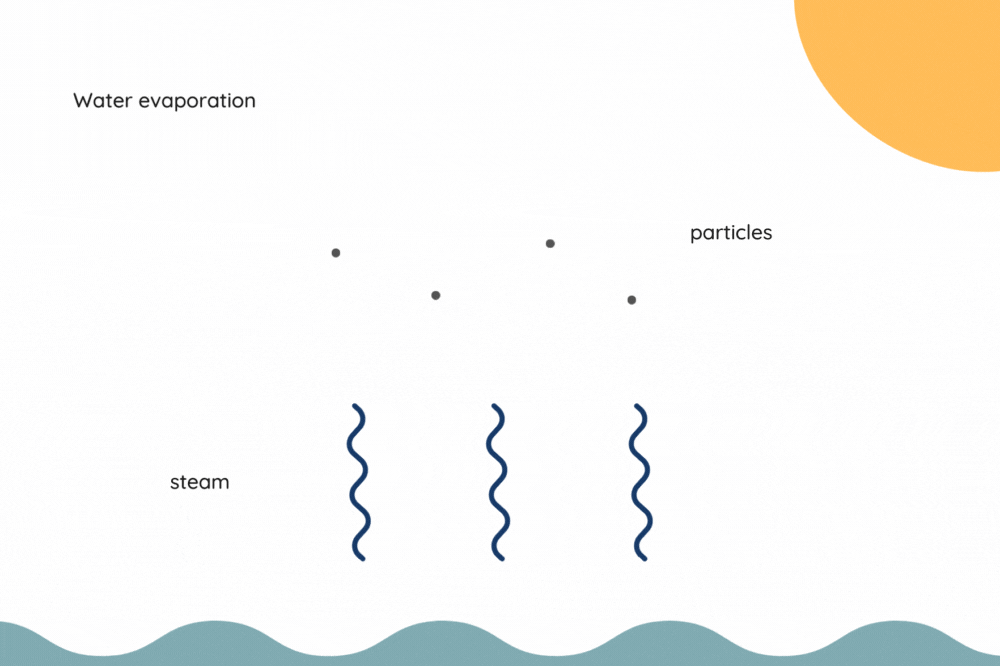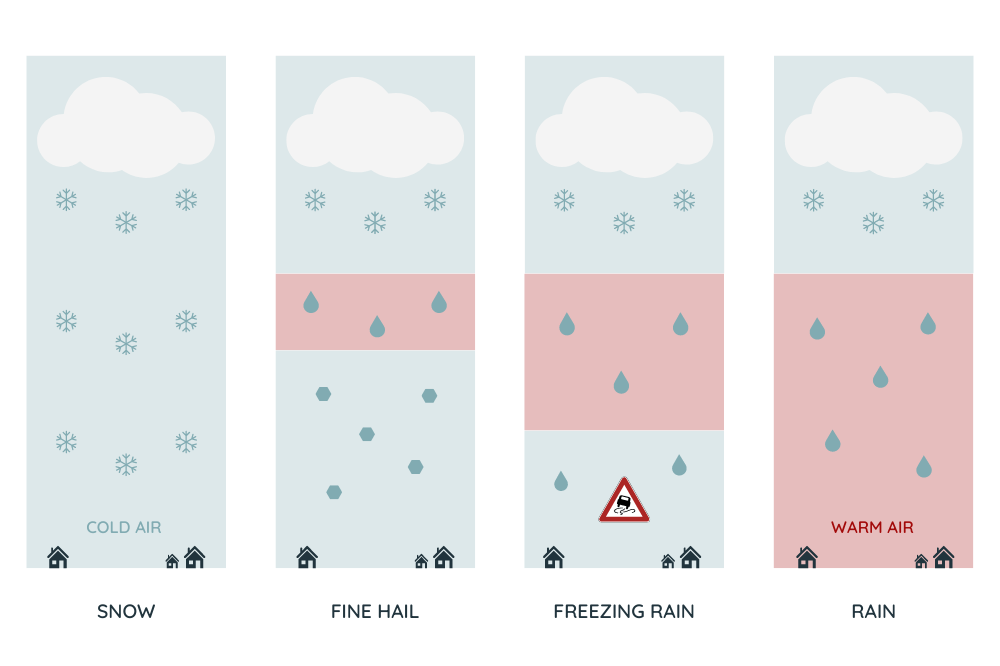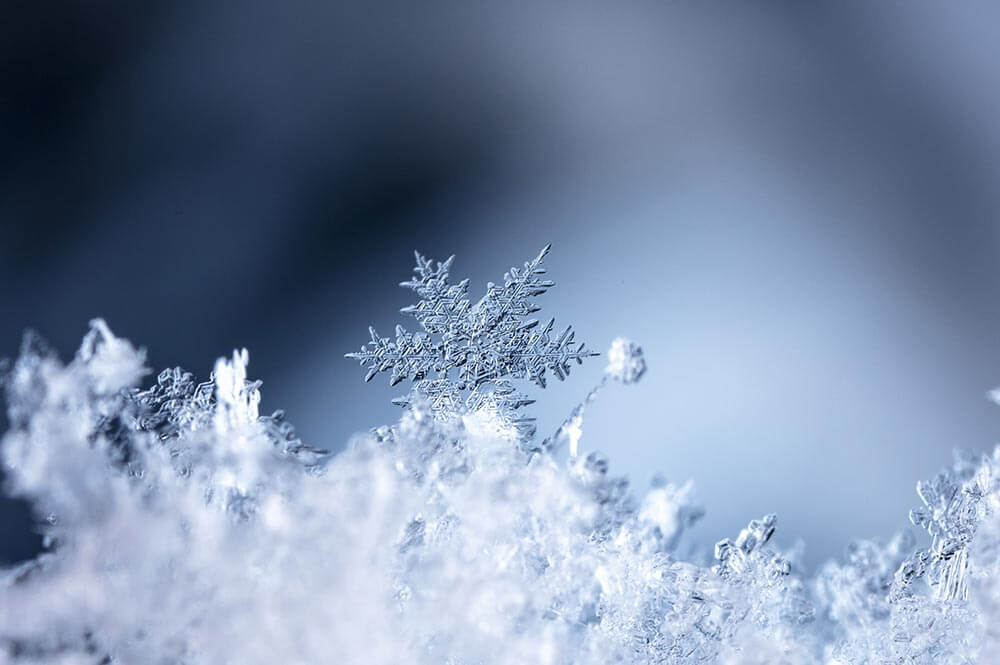Why does it rain ?
Explaining an out-of-the-blue phenomenon
Have your umbrella ready and keep an eye on the weather barometer because December is the rainiest month of the year in France. Awaited by some and feared by others, rain is not as cherished as a sunny sky. Yet, it is an essential thing for both our climate and human life. In this article, we explain to you how rain forms and why we need it so much.
Where does rain come from?
If you have read our article on “how does snow form?”, you should have an idea on the answer to this question: why does it rain? For those who haven’t, here is a quick explanation on the formation of rainfalls.
Under the effect of solar radiation and heat, the water in lakes and oceans evaporates. While taking altitude, steam is subject to low temperatures and will thus condense. On its way, it will come across airborne particles (salt crystals, dust, sand grains) onto which it will latch in order to form droplets that will remain suspended in the atmosphere. Once these droplets are numerous enough, they form clouds.
Under the wind effect, clouds move, just like the droplets inside them. While moving, the droplets collide and stick together, eventually forming denser waterdrops.
Once the waterdrops get too heavy to remain suspended in the atmosphere, they fall down from clouds and then rain starts.

However, clouds are not all about rain and snow, some clouds are specific to rainfall types, when others will make the rain fall in no form. We will discuss this matter in a future blog article.
The different types of rainfall
Rainfalls stand out by their aspect but also by the intensity of the phenomenon. Several factors have an impact on these two features such as temperature, humidity or even airmasses movement.
There are two types of rainfall: one is stratiform and the other convective. Although it might sound technical, it is actually quite simple to understand. How to differentiate them?
- Rainfalls that are said to be stratiform appear when humidity slowly goes up into the atmosphere, this phenomenon often happens during atmospheric depressions. Thanks to their cloud cover, rainfalls cover a large surface and last a long time. However, stratus-type low clouds generate rainfalls of low intensity like drizzle or light snowfalls.
- Convective rainfalls form when the air is unstable and when humid airmasses suddenly go up into the atmosphere. These rainfalls are localized and usually last from a few minutes to an hour. Unlike stratiform rainfalls, they are of strong intensity which results in storms, showers or cyclones. In this particular case, your barometer’s hand will quickly tilt towards the left side of the barometer’s face.
Whatever the type of rainfalls, they can be of two different forms: liquid (rain, drizzle) or solid (snow, fine hail). It will depend on the temperature which the steam, condensed in the clouds, is subject to. But that’s not all! When these liquid or solid particles fall, they can also be exposed to temperature changes that alter their aspect.

The rain’s purpose
Even if the rain can sometimes make us grumpy, one must not forget that it plays an essential role in our environment and life in general.
If you notice a few raindrops falling, don’t get discouraged by them, but instead make the most of the rain by getting some fresh air, as long as you wear rain clothes. Did you know that rain has benefits on our health? Thanks to its negative ions, rain stimulates our organism and purifies air, by eliminating suspended particles, which is a great thing for our lungs.
But rain does not only affect our physical health, it also affects our mental health. Hearing the sound of the rain and smelling the scents it generates tend to convey a feeling of serenity and relaxation. This is why it is important to get outside and get some fresh air even during rainy days.

Not only it is good on our health, but rain is, above all, essential for the everlasting water cycle and thus life on Earth.
When falling into the ground, waterdrops get inside soils to feed plants and fill phreatic tables, or they can flow into rivers, lakes and oceans.
Rain enables peoples to build up fresh water reserves for their own consumption or farming. On the other hand, it helps make some of our planet areas become fertile and hospitable and keep polar regions balanced.
Rain is so important to life that researchers have developed techniques enabling rain to fall since 1946.
It is not about performing a rain dance or making incantations but more about cloud seeding. This artificial rain technique consists of injecting substances into the clouds (salt, dry ice, silver iodide…) allowing to quickly increase the amount of waterdrops within clouds, with the aim of increasing the quantity of rainfalls.
This solution is actually used in drylands to fight against droughts and irrigate farmlands.
More recently, the United Arab Emirates have been using this new technique with drones. Developed by English universities, this new process consists of sending electric discharges into the clouds creating an imbalance which results in forming denser waterdrops and thus making the rain resist high temperatures.
Using this kind of technology shows us how precious rain and water resources are. Therefore, we should not curse the weather when a rainy day is forecast.

